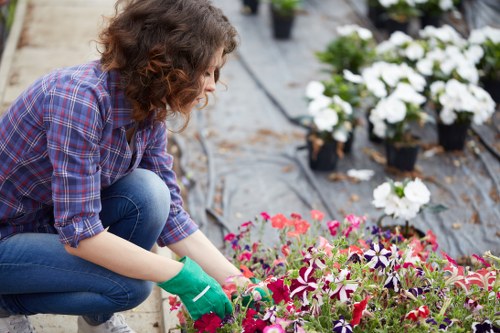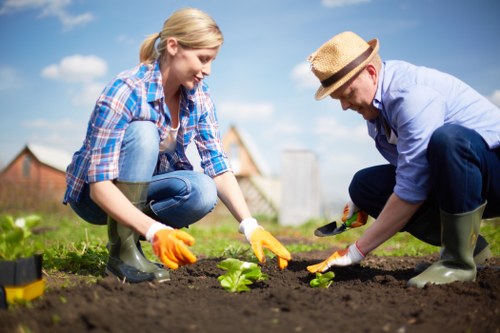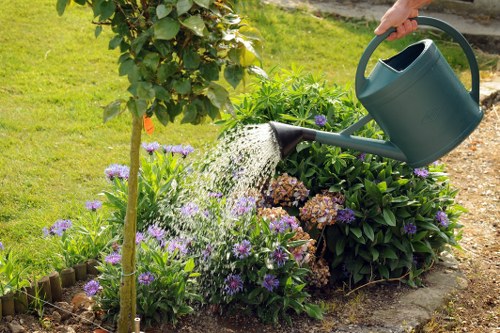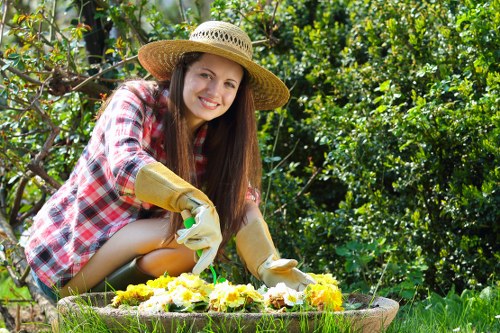Gardening in Hillside: A Comprehensive Guide to Thriving Gardens
Introduction to Hillside Gardening

Gardening in hillside areas presents both unique challenges and rewarding opportunities for gardening enthusiasts. The varying elevations, slopes, and soil conditions require specific strategies to ensure a flourishing garden.
Understanding the terrain is crucial. Hillside gardening involves working with gradients, which can affect water drainage, sunlight exposure, and soil stability. Proper planning and execution can turn these challenges into advantages.
In this guide, we will explore essential tips and techniques for successful hillside gardening, covering everything from soil preparation to plant selection and maintenance.
Soil Preparation for Hillside Gardens

Soil quality is the foundation of any successful garden, especially on a hillside. The first step in preparing your hillside garden is to assess the soil type and structure.
Amending the soil is often necessary to improve fertility and drainage. Incorporate organic matter such as compost or well-rotted manure to enhance soil texture and nutrient content.
Additionally, consider implementing terracing or creating raised beds to stabilize the soil and create flat planting areas. These structures help prevent erosion and make gardening more manageable.
- Test soil pH and adjust as needed
- Incorporate organic matter
- Create terraces or raised beds
- Ensure proper drainage
Choosing the Right Plants

Selecting plants that thrive in hillside conditions is vital for a sustainable garden. Opt for species that are well-suited to slopes, have strong root systems, and can tolerate the specific microclimates of your hillside.
Consider native plants, as they are adapted to the local environment and require less maintenance. Additionally, drought-resistant varieties are beneficial in areas where water drainage is rapid.
Some popular choices for hillside gardens include:
- Hostas
- Daylilies
- Lavender
- Ornamental grasses
- Sedums
Watering Techniques for Sloped Gardens

Effective watering is essential in hillside gardening to ensure that plants receive adequate moisture without causing soil erosion. Implementing drip irrigation systems can provide precise watering directly to the plant roots.
Mulching is another important practice. A thick layer of mulch helps retain soil moisture, regulate temperature, and prevent weed growth.
Additionally, creating swales or rain gardens can help manage runoff and direct water to areas where it is needed most.
- Install drip irrigation
- Apply organic mulch
- Create swales or rain gardens
- Monitor soil moisture regularly
- Adjust watering based on weather conditions
Local Expertise and Services

For those gardening in Hillside and the surrounding areas, accessing local expertise can greatly enhance the success of your garden. Local gardening services offer tailored advice and hands-on assistance to address the specific needs of hillside environments.
Whether you are a novice or an experienced gardener, professional services can provide valuable insights into soil management, plant selection, and sustainable gardening practices.
Don't hesitate to reach out and take advantage of the wealth of knowledge available in your community.
Nearby Areas with Unique Gardening Opportunities
Hillside is surrounded by several beautiful areas that offer unique gardening opportunities. Here are some of the closest regions to consider:
- Green Valley – Known for its fertile soil and diverse plant species.
- Riverbend – Offers excellent water resources and scenic landscapes.
- Sunset Ridge – Ideal for sun-loving plants and vibrant floral displays.
- Maple Grove – Features rich organic matter and a variety of native plants.
- Pinecrest – Perfect for gardeners interested in coniferous and shade-tolerant species.
- Oakwood – Renowned for its sturdy trees and extensive root systems.
- Lakeside – Provides opportunities for water gardening and aquatic plants.
- Meadowbrook – Great for wildflowers and naturalistic garden designs.
- Stone Harbor – Popular for rock gardens and drought-resistant plants.
- Willow Springs – Offers moist soil conditions suitable for a variety of plant types.
Maintenance Tips for Hillside Gardens
Regular maintenance is key to sustaining a healthy hillside garden. Here are some essential maintenance practices:
- Weeding: Keep the garden free of invasive species that can compete with your plants.
- Pruning: Regularly trim plants to encourage growth and prevent overcrowding.
- Soil Health: Periodically test and amend the soil to maintain optimal fertility.
- Pest Control: Monitor for pests and employ eco-friendly solutions when necessary.
- Mulching: Reapply mulch as needed to conserve moisture and suppress weeds.
Enhancing Aesthetics on Slopes
Making the hillside garden visually appealing involves thoughtful design and placement of plants. Utilize layers and groupings to create depth and interest.
Incorporate ornamental features such as garden paths, seating areas, and decorative elements to enhance the overall appeal.
Lighting can also be used to highlight key features and extend the enjoyment of your garden into the evening.
Creating Terraced Levels
Terracing not only helps with soil retention but also provides distinct planting zones. Each level can host different types of plants, allowing for a diverse and colorful garden.
Selecting Suitable Plants for Each Terrace
Choose plants based on the specific conditions of each terrace. For example, sunnier terraces are perfect for vibrant flowers, while shadier levels can host lush ferns and shrubs.
Sustainable Practices in Hillside Gardening
Adopting sustainable gardening practices ensures the long-term health of your hillside garden and the surrounding environment.
- Composting: Recycle garden waste to create nutrient-rich compost.
- Rainwater Harvesting: Collect and use rainwater for irrigation.
- Native Plants: Utilize native species that require less water and maintenance.
- Permaculture Principles: Design the garden ecosystem to be self-sustaining.
Implementing these practices not only benefits your garden but also contributes to environmental conservation.
Conclusion
Gardening in Hillside offers a unique and fulfilling experience, blending creativity with nature's challenges. By understanding the specific needs of hillside gardening, preparing the soil adequately, choosing the right plants, and maintaining your garden diligently, you can create a stunning and sustainable outdoor space.
Embrace the beauty of hillside gardening and transform your slope into a vibrant and thriving garden.
Contact us today to start your hillside gardening journey or book your service now to receive expert assistance.
